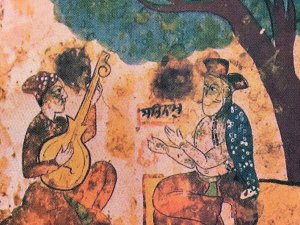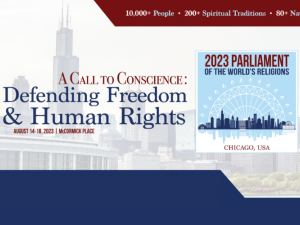Love. We all long for it. We spend our lives in a conscious (or subconscious) search for it. Yet, many of us do not understand love. We do not understand what it is, how it works or what to do with it when we find it.
The Siri Singh Sahib, Yogi Bhajan, once described love in a very beautiful way. He said,
“What is love? When you feel and experience selflessness within yourself and you can vibrate for someone, then you are fulfilled with love. This is the highest state of individual consciousness. Love is the experience of selflessness within oneself. No one else is involved. Love is a power beyond the being because love is a totality of the being. Love is not a business: ‘I'll bring you flowers, you give me a kiss.’ It's not a commodity. It does not need approval or appreciations (otherwise it must depreciate). The state of love is beyond this. Come what may, neither is there ‘Yes’ or ‘Nay.’” (http://www.sikhmatrimonials.com/s/OnLove)
But what does this mean, practically speaking? How can a person become selfless towards another person? How can someone vibrate for someone else?
When we search for a partner or a mate, each person begins their search with a set of agendas. The agendas are about what “I want” from the other person. Not about what I have to offer another person. From the beginning, we start off wrong because desire and love are not the same thing. Desires can only be temporarily satisfied. Then they leave a person unfulfilled, longing for more.
 By lucky chance, sometimes two people come together because they
match each others lists. The man has what the woman wants. The woman has what
the man wants. They feel fortunate. They decide to get together or get married
– whatever their cultural preference. The relationship begins in earnest. What
happens next? Each one begins measuring the other person based on their
expectations and desires. And they feel let down or disrespected when those
expectations are not met. This can be the start of disappointment, resentment
and blame.
By lucky chance, sometimes two people come together because they
match each others lists. The man has what the woman wants. The woman has what
the man wants. They feel fortunate. They decide to get together or get married
– whatever their cultural preference. The relationship begins in earnest. What
happens next? Each one begins measuring the other person based on their
expectations and desires. And they feel let down or disrespected when those
expectations are not met. This can be the start of disappointment, resentment
and blame.
At the same time, on a deeper level, a more powerful process unfolds. Our ideas of what we may want from a member of the opposite sex do not occur in a vacuum. They are the result of our conditioning. The man’s relationship with his mother influences what he wants and how he reacts to a woman. The woman’s relationship with her father influences what she looks for and how she responds to a man. If either of them have had previous relationships, there are wounds, pain and baggage carried from the failures and disappointments of the past. And then there may be ancestral karmas added to the mix. What is the “role” of a man or woman in the relationship? These predefined and not necessarily healthy beliefs get transferred from generation to generation.
Love is the ability to see the other person, exactly as they are, with total acceptance and non-judgment; and with a spirit of appreciation and service. To “behold” them. To “hold” their “be”-ing. When the gaze of love falls upon us, like the sun shining on the earth, it stimulates the spirit to growth, expansion and joy. It is so natural to open and flower under that gaze.
Yet, we do not always have the capacity to behold one another in relationships. There is so much garbage in the subconscious mind from parental issues, past relationships and karmic burdens, that the partners may barely see each other at all. Each one projects their shadow issues about the opposite sex onto each other. The result of this is shadow boxing.
Shadow boxing happens when the unresolved pain that “she” has around men meets with the unresolved pain that “he” has around women. Rather than being in the moment, seeing each other, serving and appreciating one another, those two shadows interlock in an effort to find resolution or healing. The shadow believes that if the other person would just “do this” or “say this” – then all of that unresolved pain will magically disappear.
I t’s not true, of course. But it is a very human and normal
dynamic that happens between partners.
t’s not true, of course. But it is a very human and normal
dynamic that happens between partners.
The irony is, on the path of love, shadow boxing is unavoidable. Love is a purifying power. It brings up the pain and wounds in order that they can be healed once and for all. Unfortunately, if we do not understand how love works, the shadow boxing becomes difficult to bear. And many relationships break under the weight of it.
A broken relationship may be a divorce. It may be two people creating a comfortable, harmonious distance that keeps them functional, but not intimate. It may result in destructive behavior like cheating, alcohol or drug abuse. Shadow boxing has many different styles of breaking the bonds between two people.
There is a beautiful line from the Guru that says ‘It is not the people who merely sit next to each other who are married. It is those who have one light in two bodies who are truly married.’ The power of love allows our most subtle soul essence to flow back and forth in such a conscious way that the separation of “you” and “me” is not felt anymore. But the shadows in the mind can block the light of the soul from merging. This is why relationships can be so difficult. They offer the promise of the most amazing union. And at the same time, they take us to darkest realm of the subconscious, to face issues inside of ourselves that we would rather not engage.
Marriage is called the highest yoga because it simultaneously promises the most beautiful union while asking us to do the most difficult work together.
The sacred ceremony of the Laavan, composed by Guru Ram Das, offers couples a path to this union. Part 2 of this article will focus on how the Laavan creates an entirely different promise for relationships. How, through the Guru, the shadows can be integrated and healed so that genuine compassion and selfless love can blossom.
With Divine Light,
-- Read Part 2 of this article here.





